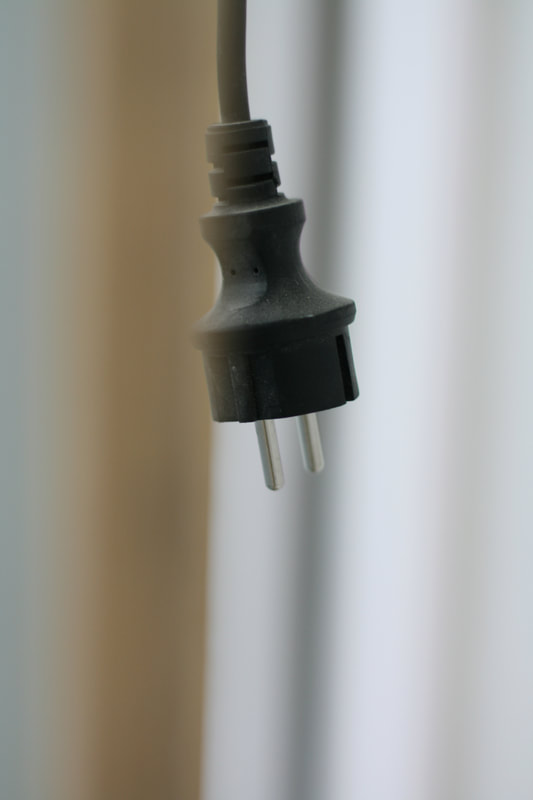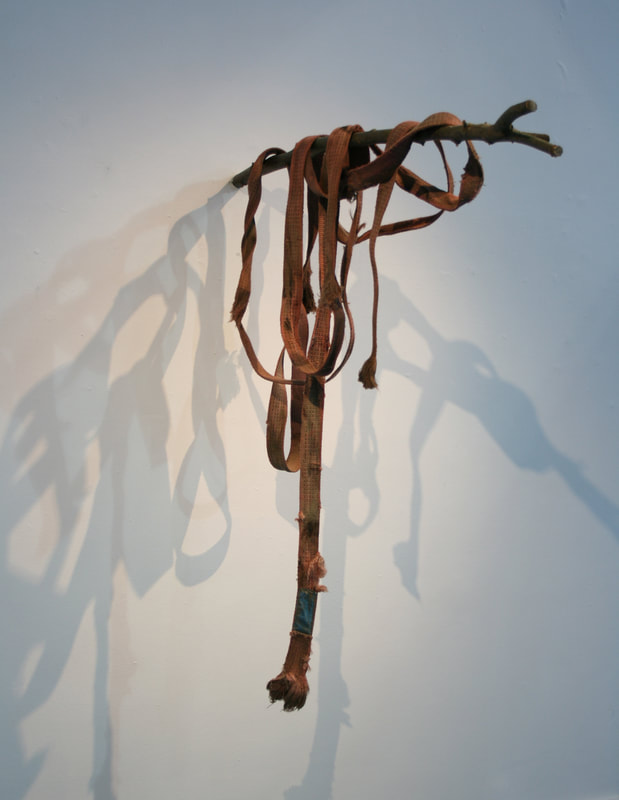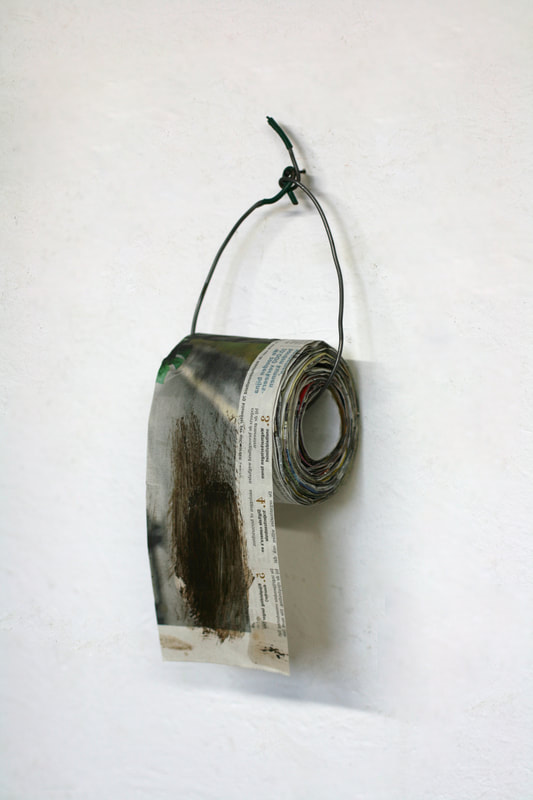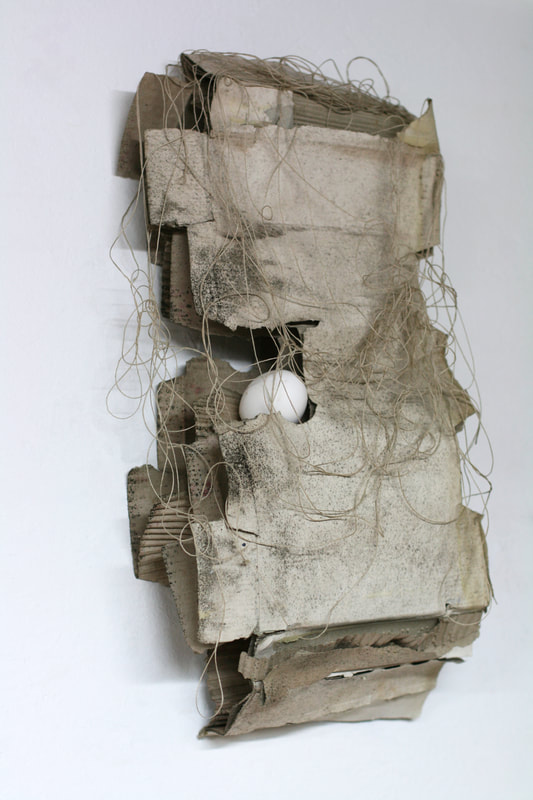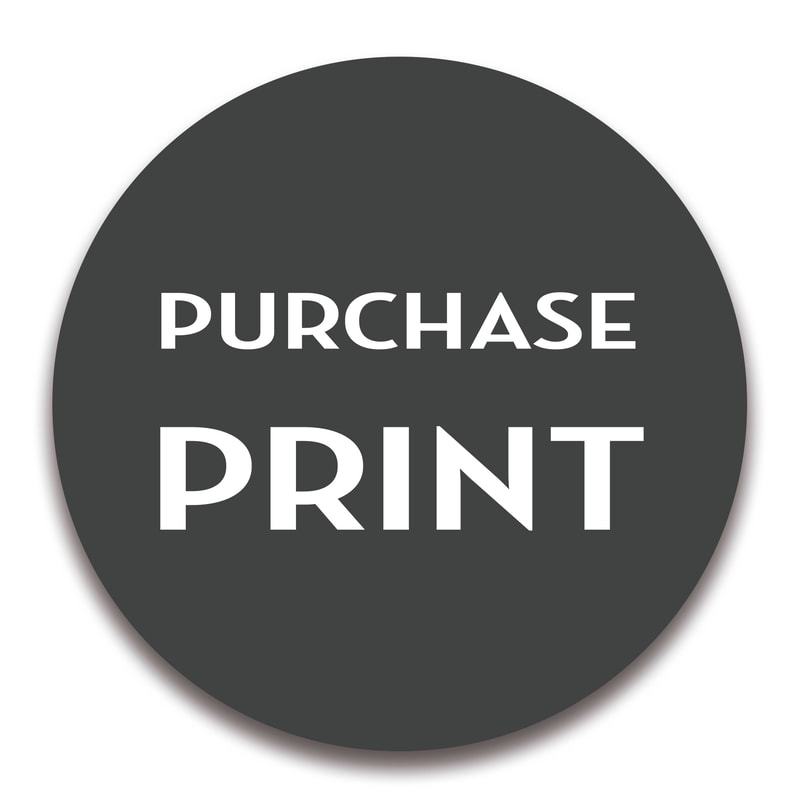|
GERT SCHEERLINCK COMBINES AND RELOCATES EXTENSIVELY USED OBJECTS.
CARMEN HUST | APRIL 2015 An interview aiming to dive the depths of artist Gert Scheerlinck and his passion for extensively used objects. By changing their context and there by reviving them, Gert Scheerlinck exposes other peoples trash, in the consideration that the objects are still useful (as other people’s treasure). The moment people stop using the object because it’s broken or they loose interest in it, they want to remove it from society and call it ‘trash’. Combining and relocating these found materials constitutes a change in our perception of its use, its lifespan or its status. How’s your process in your works? Do you find an object and create its story or is the story prior to the search of a specific object? Gert Scheerlinck: I deliberately go looking for objects along roads or on construction sites, but never visit container parks. At least not in function of my art. For each item, I remember the place where it was found. I enjoy the moment of discovery, but what gives me the most pleasure is when that what was once dumped, ends up in an exhibition. Plastic, sticks, ropes, chains, zinc, wood, etc. are the things I look for. I only take those items that I’m sure off I will use in art work. That decision is often intuitive, although I put forward a number of conditions. The object must have a certain "soul." One should see that it was used extensively, that it carries a certain history. A special shape or color also helps. I take the objects to the studio, where I store them for a while. I never really use them immediately for an art work, but take my time to think about it. When the found object already emits a certain poetic power I consider it as a kind of readymade. I will stay close to the original function of the work, it tells - so to speak - its own story. With other objects, it is often more interesting to get rid of its original function and to give it a story. By minimal interventions an assemblage, sculpture or installation comes to life. A work is not finished until you can see it from different angles. By doing this, I do not enforce my story to the viewer, and the art work is open for interpretation. What is the biggest and perhaps strangest transformation you have processed? What was the original material? (and what was it transformed into?) Gert Scheerlinck: That’s a hard question, mostly I stay close to the objects as I find them. The found objects have to be recognizable. So, in my opinion, the transformations aren’t that big. One of my favorite artworks and also, the one where the transformation is the most significant is ‘The Argument’. A piece I made in 2013. I found a cherry stone pillow in the trash bin of our house. My wife had thrown it away, because it was burnt in the microwave and there were holes in it. Unusable, but not for me. I saw a ‘soul’ and the possibilities for a good work. It ended up in my studio where I tried to use it as a readymade, I thought it was strong enough, but soon felt something was missing. Eventually the cherry stone pillow was transformed into a sculpture. You see two people tied up with rope. The end of the rope hangs in a tangle over their heads, like a cloud. The rope is also burned I challenge the viewer to explore the dialogue between matter and daily life and at the same time I invite them to take a moment and think about the entire life behind these things.
|
For me, It’s about a relationship between two people. They’ve been together their whole life with their tensions and quarrels, they feel trapped. But even in their thoughts and arguments you feel they belong together. So in the end, it’s about accepting each other and in this acceptance feel the love between two people. But again, there are enough different interpretations to discover in this piece. The search for your own interpretation is important.
And how did your sudden, personal interpretation, move from trash to treasure? (What led you to exhibit other peoples trash as your treasure?) Gert Scheerlinck: The moment people stop using the object because it’s broken or they loose interest in it, they want to remove it from society and call it ‘trash’. I never look at it as ‘other peoples trash’, because I look at things differently. Combining and relocating these found materials constitutes a change in our perception of its use, its lifespan or its status. In an exhibition space I challenge the viewer to explore the dialogue between matter and daily life and at the same time I invite them to take a moment and think about the entire life behind these things. To answer your question, in the past I was intrigued by painting with matter and I was and still am a huge fan of the work of Antoni Tàpies. I’ve studied painting and I graduated with experimental work (paint treatment, addition of non - art materials, the choice of unusual carriers). At my first exhibitions I showed assemblages of CD cases, painted on the inside. A curator asked me about the importance of paint in my work. It was then that I realized I have the insights of a painter, I think in layers, colors, texture, composition... but I didn’t need paint to create! At that time I became more and more interested in the Arte Povera movement and how
artists like Merz, Kounellis, Anselmo and Zorio used their own visual language. The ideas of conceptual artists Duchamp, Kosuth and Marcel Broodthaers openened my eyes and I’m certainly influenced by them but I use a different approach. Found objects and aesthetics is crucial, where in Conceptual Art the idea or concept is more important than aesthetic or material - technical considerations. Who inspires you the most in your process of renewing your work and why? Gert Scheerlinck: It is not so much who inspires me but the moment I get inspired. Most of my ideas simply come from experimenting. It’s the trial and error phase that’s refreshing and it’s that moment I get most ideas. My inspiration is always based on things I see in daily life, cultural stratification and contradictions. It all starts with two or three new works that are closely related. They are the foundation for further research and they give me some insight in the theme for a next exhibition. So, you work in series?! For the sake of research? Or for the sake of a deeper understanding from your audience? Gert Scheerlinck: Series, to me it sounds like doing one thing and repeating it multiple times. That’s not how I work. When I mentioned the works are related, I meant there’s a dialogue between them. As an artist you need to be able to build up an exhibition. Surprise the viewer, make him curious by playing with light and space and distance between the works. Put the works side - by - side or facing each other is a different approach. It’s no coincidence, believe me, an artist thinks about these things, because it’s important to convey a feeling. |
In 2014 I made a work called ‘Come In, Watch Out’. It was a security pole placed behind a doormat made out of disposable sponges. I placed it at the entrance of the exhibition. If people took a minute to think about it, they would have read it as a statement, “you are welcome, but please, I warn you, take your time to look attentively.
“Art can be everything" and I quote
Tàpies: “It can be a burst of sunlight in the middle of a snow fall. It can be the soft, hope - filled air of early morning or the bitter, stale smell that comes out of a prison” Only a few people understood what the work was about. A few years back I read an article ‘The Game Of Knowing How To Look’ by Antoni Tàpies. It had a huge impact on my life and I recommend everyone to search it on the internet and read it. He stated that when you go to an exhibition, you should behave like the person who goes to a concert, promise yourself the joy of listening and let you be carried away to a certain landscape or a scene from history. Art can be everything and I quote Tàpies: “It can be a burst of sunlight in the middle of a snow fall. It can be a storm cloud. It can be a step of a man on the road of life or - why not - a foot stamping the ground to say “enough!” It can be the soft, hope filled air of early morning or the bitter, stale smell that comes out of a prison”. “It can be what we are, what is today, now, what will always be.”
Last but not least. Should you create a piece with the title A R T I C U L A T E what would your preferred object/material be? And what does the concept of being articulate mean to you? Gert Scheerlinck: It is only after I create a piece of art that the title comes up, I never start from a title. Moreover, I usually keep the title as open as possible in order not to steer the audience too much in one direction and to invite them to articulate their own vision on the work. So, let me invite you to envision what kind of work you would expect me to make. By now you have more insight in my way of working, so maybe you can picture the answer to your question yourself.
After months of dialogue with Gert Scheerlinck my curiosity to him as an artist as well as a person, is still increasing. It has been an outmost pleasure coming to know him and his work. This article is part of ARTICULATE #3. Check out the full release below
|
SUPPORTARTICULATE
www.articulate.nu SUPPORT Monday - Friday 8:00 - 16:00 [email protected] +45 30 48 19 81 Head Quarters VAT DK40953191 |
|

